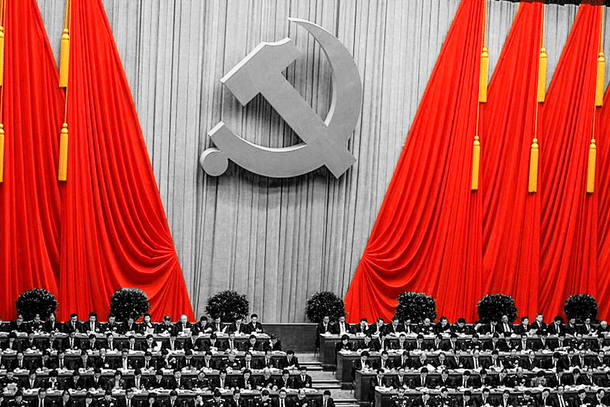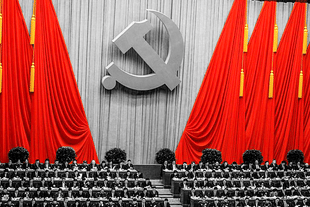World
China’s Sinicisation Of Islamic Architecture Is Almost Complete, But Its Communist Party Was Once In Two Minds
Ujjwal Shrotryia
May 28, 2024, 03:35 PM | Updated 03:48 PM IST
Save & read from anywhere!
Bookmark stories for easy access on any device or the Swarajya app.


China is almost on the verge of completing the "sinicisation" of Islam, getting it rid from “foreign influence” to a more “Chinese” version.
The last remaining major mosque in China, the Grand Mosque of Shadian, one of the largest in the western Yunnan province, has undergone radical changes that make it look more Chinese.
Its big green dome, which was surrounded by four small domes and four large minarets, has been modified and replaced with a pagoda. The minarets have been converted to small pagodas and their height reduced.
This comes after the Chinese government began a five-year programme in 2018 to sinicise Islam — removing foreign architectural influence and replacing it with characteristics that are more China-like.
This was first proposed in 2016 when Xi Jinping, in a speech, asked various religious and ethnic groups to “hold high the banner of Chinese unity,” ie, putting China ahead of religious and ethnic differences.
This push to make followers of Islam and their architecture “Chinese” has resulted in either the destruction or remodelling of more than 2,300 mosques across China.
Unlike in democracies like India and Western countries, there were no protests by the Muslim community this time when the Shadian mosque was being remodelled.
Earlier, when the same remodelling happened at Najiaying Mosque last year, which is just 100 miles away from the mosque at Shadian, there were riots, that were brutally crushed by the Chinese Communist Party (CCP).
Seeing the brutality and heavy-handedness of the state’s crackdown, when the Shadian mosque was closed for modifications, there were no protests.
China has multiple ethnic and religious communities.
Among the total 20-22 million Muslims in China, there are primarily two Muslim groups. One is Hui Muslims — who number just 11 million — and the other is the widely known Uyghurs of Xinjiang.
The Chinese government has allowed more freedom to the Hui than the Uyghurs. Hui Muslims, it is said, have culturally adjusted to the Chinese way of life, intermarried with the Han Chinese — the majority Chinese community — and even adapted their customs to some of Han's.
For example, burning incense in ceremonies and even having female-only and female-led mosques.
The Uyghurs, on the other hand, have faced very harsh measures from the state. The 12 million Uyghurs in Xinjiang consider themselves culturally closer to Central Asian nations and speak a language that resembles Turkish — a perfect example of foreign influence in Chinese books, and suitable for sinicisation.
They have put Uyghurs into concentration camps, which the Chinese claim are “schools” or “re-education camps” where Uyghurs are taught Mandarin and the Chinese way of life.
It is reported that a million Uyghurs are in these re-education camps, and there are shoot-to-kill orders for anyone who tries to escape the camps. This includes forcibly sterilising Uyghur women, separating parents from their children, and breaking the cultural traditions of the community.
The US, UK, and the United Nations Human Rights Committee have accused them of genocide, which the Chinese vehemently deny. They claim that these re-education schools are necessary for combating terrorism.
But what is Chinese culture?
It can differ from region to region; however, some scholars believe that the CCP has a narrow definition of Chinese culture. They say it includes adhering to CCP values, denying foreign influence, like the Saudi-style architecture of mosques, and speaking only Mandarin.
However, it appears that the CCP itself was in two minds about it. When economic liberalisation of China happened in the 1990s under Deng Xiaoping, the CCP allowed investments from Saudi Arabia and Kuwait into the country.
These efforts saw the razing of centuries-old mosques, which were built with Chinese-style architecture, and were modified to Arabic style.
Recent modifications of these mosques are a reversal of that earlier trend.
Staff Writer at Swarajya. Writes on Indian Military and Defence.





